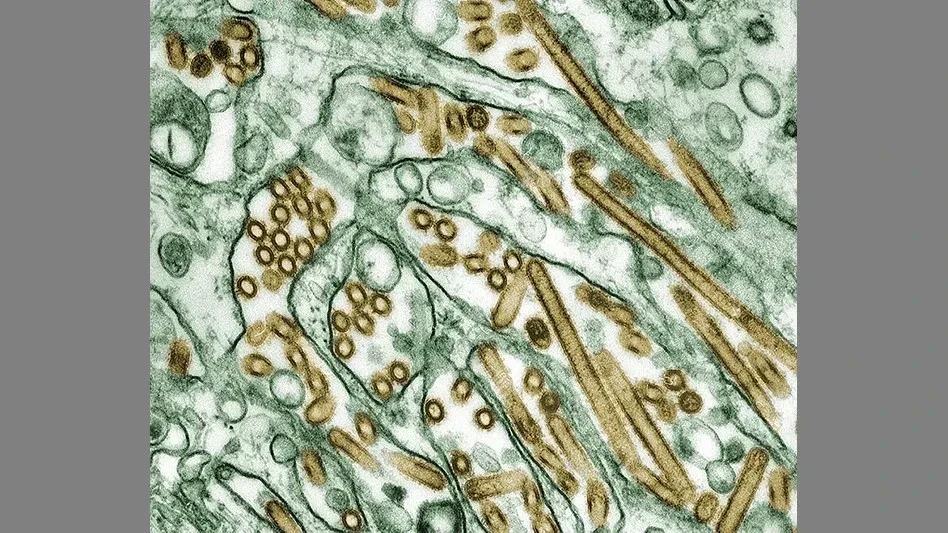Wheat gluten is the water-insoluble protein portion contained within the endosperm of wheat. Gluten can be separated from wheat, with the resulting substance consisting mainly of protein but also containing small amounts of fat, moisture and ash.
The protein component of gluten is comprised of many different types of protein molecules, the majority of which fall under the classification of gliadin (single-chained) or glutenin (multi-chained) protein fractions. These proteins give gluten its characteristic cohesive and elastic properties, which serve to make wheat unique in its suitability for breadmaking.
GLUTEN PRODUCTION. A variety of different procedures can be used to produce gluten (1). These procedures vary according to the raw material (flour vs. whole wheat, soft wheat vs. hard wheat), the mixture consistency (dough vs. batter), the dispersion medium (water vs. chemical), and the separation equipment (e.g., centrifuge, shaker screen, hydrocyclone or agitator/ribbon blender) that are used in the process. In general, wheat flour is mixed with water to form a dough or batter, the starch components are removed through washing, and the resultant gluten is collected and dried.
The gluten can then be further modified by the addition of other ingredients (e.g., emulsifiers, soy lecithin, diacetyl tartaric acid ester surfactant or ascorbic acid); by reaction with various solvents, enzymes or compounds; or by a variety of other treatments such as grinding, heating or fermenting. These treatments modify or enhance various characteristics of the gluten, thereby improving its functionality for use in different applications.
APPLICATIONS & USES. Gluten is used worldwide, with the predominant application being for baking purposes. As such, it provides strength to doughs and helps to retain the gas and moisture generated during the breadmaking process. This leads to good oven spring and final loaf volume of the bread. In addition, it contributes to product softness through water absorption and retention, and it provides natural flavor. Bakery products that may contain added gluten include multi-grain and fiber-increased breads, high protein breads and bagels, pizza crusts, Vienna bread, hamburger buns and hard and soft rolls (1).
In addition to its bakery applications, gluten has numerous other food uses. Prominent among these is its meat applications, either as a binder, extender, or restructurer for meat products (e.g., turkey, beef, pork, or lamb) or as an ingredient in the production of simulated or imitation meats (e.g., hamburger, sausage, or crab analogs). Gluten products are also incorporated into many other food systems, such as ice cream, soy sauce, breadings and batters, coffee whiteners, protein fortified beverages, puddings, sherbets, frozen desserts, and egg white and dairy replacers (1).
In its applications in foods for human consumption, gluten products are used extensively in pet foods and animal feeds. In pet foods, it is important for a variety of reasons, including its high protein content, its binding ability (to absorb meat juices and to hold chunks of meat together), and its ability to be used in producing simulated meat products. As a feed ingredient for other animals, gluten products may be incorporated into milk replacers for weanling calves and pigs or used as a binder for floating or sinking aquaculture feeds (1).
Gluten products also have a wide variety of non-food uses. These include cosmetic (e.g., shampoos, conditioners, toothpastes, creams, lotions, and shaving products), pharmaceutical (e.g., binder for tablets), and therapeutic (e.g., post-operative drainage) applications, as well as use in the production of coatings and films, cigarette filters, chewing gum, detergents, construction materials (e.g., plaster and concrete), textiles and leathers, and adhesives for ceramics and plywood (1).
NUTRITIONAL ASPECTS. Wheat gluten contains approximately 75-80 percent protein. Thus, its primary nutritional usage is for protein supplementation, with applications in a variety of products such as specialty beverages and bar formulas. While wheat gluten is limited in its content of the amino acid lysine, it is still an effective protein fortificant, especially when used in conjunction with soy, a protein source high in lysine. U.S. government regulations allow for fortification of foods with protein (2), and wheat gluten is one of a variety of sources that can be used for this purpose.
Wheat protein can cause adverse reactions in susceptible individuals, and thus wheat is included as one of the Big 8 allergens for which product labeling is required (3). Celiacs and other individuals with a wheat or gluten allergy or sensitivity should avoid consuming gluten-containing products.
References
1. MANINGAT, C.C., BASSI, S, and HESSER, J.M. Wheat Gluten in Food and Non-food Systems. Technical Bulletin, AIB International, Volume XVI, Issue 6, June 1994.
2. Code of Federal Regulations. 21CFR104.20. U.S. Government Printing Office, Washington, DC, 2006 (http://www.access.gpo.gov/nara/cfr/waisidx_06/21cfr104_06.html).
3. U.S. Food and Drug Administration, Center for Food Safety and Applied Nutrition. Food Allergen Labeling and Consumer Protection Act of 2004, August 2, 2004 (http://www.cfsan.fda.gov/~dms/alrgact.html).

Explore the August 2007 Issue
Check out more from this issue and find your next story to read.
Latest from Quality Assurance & Food Safety
- Nestlé Opens Arizona Beverage Factory and Distribution Center
- Ingredion Invests $100 Million in Indianapolis Plant to Improve Efficiency, Enable Texture Solutions Growth
- Eagle Unveils Redesigned Pipeline X-ray System
- USDA Invests Up To $1 Billion to Combat Avian Flu, Reduce Egg Prices
- Washington Cats Confirmed with HPAI as Investigation into Contaminated Pet Food Continues
- USDA Confirms Bird Flu Detected in Rats in Riverside
- Kyle Diamantas Named FDA’s Acting Deputy Commissioner for Human Foods
- QA Exclusive: Food Safety Leaders React to Jim Jones’ Departure, FDA Layoffs





